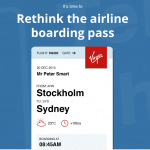(Try saying that title several times quickly).
If you are a follower of technology news you will, undoubtedly, have seen somebody writing about Apple Pay. If you haven’t seen anything about it, do let me know how your hibernation was. Of course, you can read and watch all about it on Apple’s page.
There’s been a positive reaction to this new way to pay and lots of discussion. And, of course, lots of people writing-up their experiences. Engadget have a good piece comparing Apple Pay and Google Wallet to using a credit card.
Of course it’s only available in the US so all the experiences you read about are there. But here, I think there will less of a ‘WOW’ when the system is, eventually, launched. Using the tap/wave approach to paying may be new but the UK has had contactless payments for some time. Suitably equipped phones – while few and far between – have been able to do this for a while. In 2008 (6 years ago, in case you aren’t counting) my bank, Barclays, started issuing contactless cards that allowed a tap payment for amounts under £20 (no PIN, no signature, no handing over your card).
I’ve been happily paying contactless for a while to the point where I don’t really notice it anymore. But, I thought I’d pay attention today and see how easy it is. For, if it’s already easy, are solutions like Apple Pay and Google Wallet going to make a big change to payments here in the UK?
This morning I took the train into Waterloo Station in central London. A smart-card ticketless system, Oyster, has been in place for years. But recently contactless card payments have been accepted by those little yellow readers. I took my Oyster card out of my wallet months ago and tap on the gates with a credit card. This morning, my wallet comes out of my pocket, I tap on the gate, I get to the train. The card didn’t come out of my wallet. No pressing of any buttons on any device. I don’t think it could get much easier.
And, from today, that tap on the station ticket gates also donates a penny everyday to the Mayor’s Fund for London thanks to the Penny For London initiative. No change coming out of my pocket into a tin and I feel a little better doing it.
On my way to the office I buy my breakfast, Porridge and a coffee if you’re interested, from one of the massive number of Pret A Manger stores in the city. I order, my pots are in a bag and I tap my card. This time I do take it out of my wallet. No fiddling with change.
My colleagues are not in the office at lunchtime so I go for a short walk. It was a very short walk because, today, the tourists seem to be crowding the streets around my office more than normal. I pop my head around Tesco’s front door and see the queue to pay is much shorter than normal at this time of day. A salad and spicy popcorn is paid for at the self-checkout with a tap of my wallet (again, I don’t even get the card out). The biggest hassle here is bagging my lunch.
On the way home it’s tap in and tap out at the station. I’m going to the gym so I get off a stop earlier. Contactless payment on London’s transport system is really simple & adoption seems to be picking up. Because I’m writing this piece I logged on to the system’s website. I’ve registered my card so I can download my payment and journey history if I want to. I check the statement and I notice that there were two occasions recently when my tap on the reader didn’t register properly and I am charged a higher journey fee. I update the records and click ‘apply for refund’. I’ve never had a problem getting a refund in the past. I can also see that capping has been applied because the sum of the individual journeys was higher than the equivalent daily travel-card price. I don’t do anything for this to be applied. They also operate a weekly cap but I don’t seem to spend enough with them to hit that very often.
On the way home I walk past The Hand & Racquet, a pub on Wimbledon Hill Road. I had a couple of pints there last night with a former colleague and, yes you guessed it, a round of excellent bitter was paid for at the bar with a tap on the handily placed card reader. Not for me the pockets full of change you invariably end up with after an evening in a pub.
Dinner, tonight, was already in the fridge but I wanted to pick-up some vegetables to go with it. The Co-operative near my house allows me to pay the £3.30 by tapping. In fact, the hardest part here was having my Co-op membership card swiped. The plastic on that card is separating so it doesn’t go through the reader very easily.
And that’s my day. Lots of small transactions all done without cash. In fact, so many of my days are like this I often forget to check I have cash with me so when I do need it, it can be a bit of a surprise.
My experiences here are genuine, I didn’t specially pick the shops to write this. If I’d gone to the sandwich shop for lunch then I would have needed cash. Many pubs don’t have the handy card reader and, of course, all my transactions were under £20 which allows the tap and pay. I know many of the mobile payment systems allow larger value payments but, today, I wouldn’t have needed them.
I love the advantages of tap-to-pay. With these transactions there’s no automatic receipt and I usually decline them so I’m not stuffing my wallet with ‘a useless paper receipt’ (as I once called them) and, of course, there’s no change lost down the sofa.

 Almost four years ago, on a blistering hot Sunday afternoon in North Hills, Raleigh, North Carolina, I sat listening to a group of passionate technologists outline a vision for ad-serving aimed at digital publishers that would – before the world had got so hung up on big data – show that there’s much more business insight in the ad-server data than just clicks and impressions.
Almost four years ago, on a blistering hot Sunday afternoon in North Hills, Raleigh, North Carolina, I sat listening to a group of passionate technologists outline a vision for ad-serving aimed at digital publishers that would – before the world had got so hung up on big data – show that there’s much more business insight in the ad-server data than just clicks and impressions.